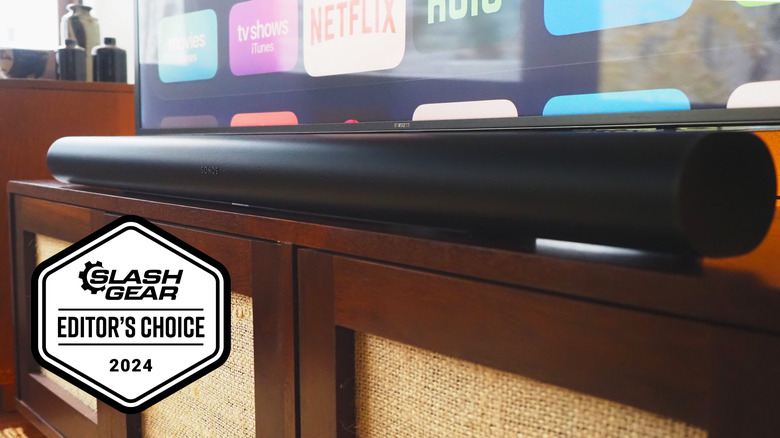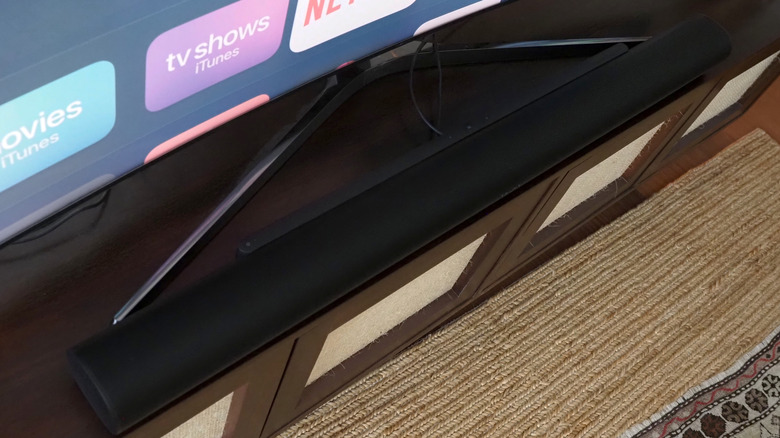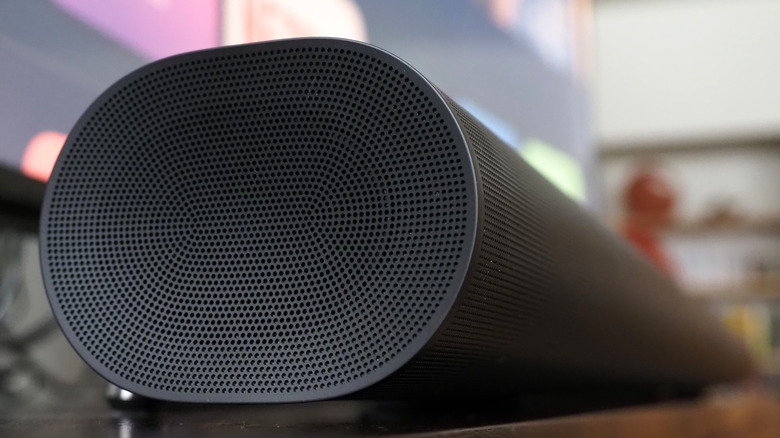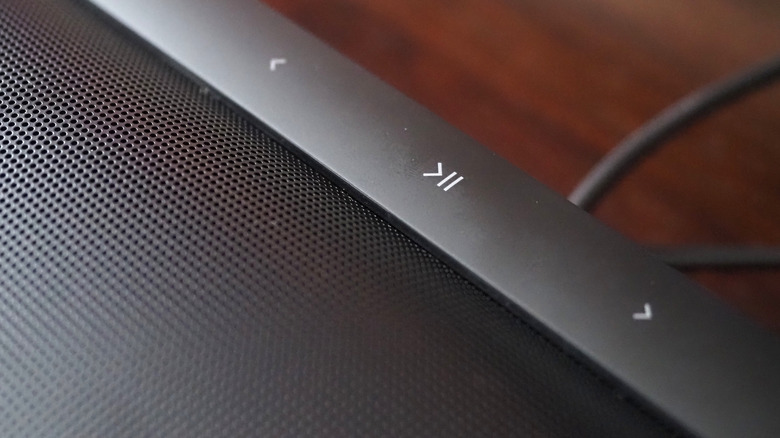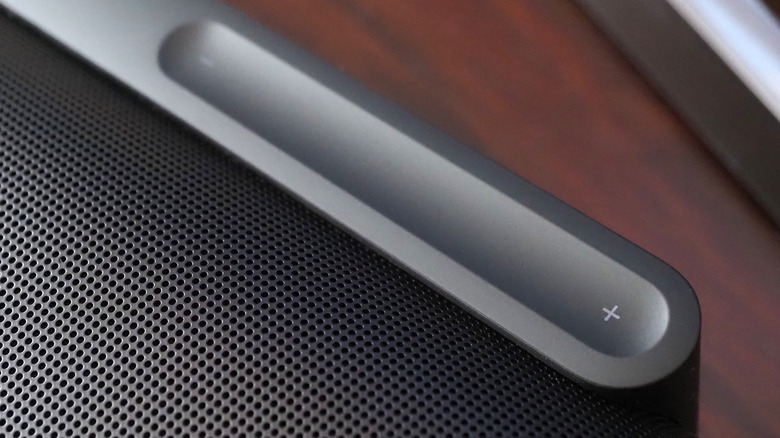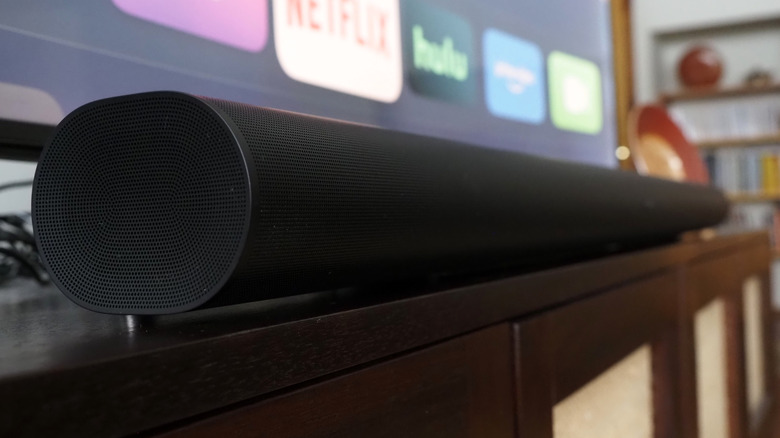Sonos Arc Ultra Review: Impressive On Its Own, Better As A System
- Impressive uptick in Dolby Atmos performance over original Arc
- Slimmer design is more surreptitious under your TV
- Easy transition to a multi-speaker setup
- Expensive, especially if you want to add more speakers
- Sonos app can be finicky
- No HDMI pass-through
We may receive a commission on purchases made from links.
The first Arc soundbar welcomed Dolby Atmos into Sonos' line-up: now, the Sonos Arc Ultra takes that audio to another level, quite literally. Slotting in as the $999 flagship of the home theater range, the Arc Ultra certainly isn't cheap, but then again it's promising to do a lot more than the average living room speaker.
As with previous Sonos home theater products, there's the potential to wirelessly add components for more bass, or rear channel sound. Arc Ultra, though, could well be sufficient as-is for many. With its improvements in Dolby Atmos performance, and its extra low-end grunt, the idea of a single soundbar that does everything, well, is closer than ever.
To deliver on that promise, there's a sizable step up in just how many amps and speakers Sonos has packed inside the Arc Ultra. Fifteen amps compared to the eleven of Arc; seven tweeters — two of which are dedicated to firing up — compared to three. Midwoofers are down in number, from eight to six, but Sonos has added a new "Sound Motion" woofer for bolstering the bass.
As surreptitious as ever
Despite all that, at first glance, Arc Ultra doesn't look all that much different from the original Arc: a long, low bar finished in matte black or white, with a curved profile. Quite honestly, you wouldn't want it to stand out, given it's meant to be placed surreptitiously beneath a TV. That's not to say there aren't differences for this update, or that they're not improvements I appreciated.
The Arc Ultra is slightly longer than the Arc, but it's also lower: 75 mm tall, versus 87 mm. It's also half a centimeter shorter in depth. Depending on the height of your TV, and the size of whatever cabinet or table your media setup sits on, that could make all the difference for positioning. As before, there's still support for wall-mounting, but at just over 13 pounds, Arc Ultra is about three-quarters of a pound lighter than the regular Arc. While the Arc Ultra will work with Sonos' original Arc wall mount, the different dimensions mean it could be visible from certain angles; there's an updated mount available.
The touch controls have been reworked, too. There's now a volume slider, as on the Era 100, which you can either sweep a fingertip across or tap. Play/pause, and track skip buttons are present, too, and a button to turn off the voice assistant (like Alexa or Sonos Voice Control, if you've enabled them). A physical switch on the rear shuts off the microphones, and there's a new Bluetooth button for direct streaming from a phone or other device.
Simple setup, if time-consuming
Setup is — if you have a recent TV — straightforward, though time-consuming if you're also adding a set of wireless rear channel speakers and a subwoofer. The best results (and the most audio options) come with an HDMI eARC connection to the TV; Sonos still doesn't include HDMI pass-through. Plug the soundbar in, wait for the Sonos app to spot it, and then it's a case of checking the CEC commands which control volume and such are working correctly.
For rear channels, you need a matching pair of Era 100, Era 300, Sonos One (or One SL), Sonos Five, or SYMFONISK (Gen 2) speakers, or a Sonos Amp driving standalone speakers like in a Sonos Architectural system. Each speaker is set up independently; then, if you're also connecting a subwoofer — any generation of Sub or Sub Mini, though only Sub 3 and 4 work for dual-sub setups — that needs to be installed, too. Finally, you can link everything together.
Then, it's a good idea to run Trueplay, Sonos' room-accommodating EQ system. There are two versions, a quick one that relies on the soundbar's own microphones, or an advanced one where you walk around the periphery of the room, waving your Apple device (Android fans will still have to borrow a friend's iPhone) while the Arc Ultra bleeps and bloops like a sullen robot. By the end, it has a better idea of how to bounce audio off different surfaces for the most effective surround sound (it also gives a good impression of just how well the width and height channels work).
Arc Ultra excels as a multi-speaker system
My usual home theater system is a first-gen Arc, with a Sub (Gen 3) and a pair of Sonos by Sonance in-ceiling speakers driven by a Sonos Amp, acting as the rear channels. They're all hooked up to an Apple TV 4K, and my Dolby Atmos consumption usually comes courtesy of iTunes purchases and rentals, or Netflix streaming. The room itself is moderately tricky, acoustically-speaking: the ceiling is relatively low, just shy of eight feet, and while there's a wall to the left of the TV, the right opens to a broader corridor.
Despite that, I've been impressed by my existing system's performance, though Arc Ultra — paired with two Era 300 for rear channels, and the new Sub 4 which is mainly an aesthetic change from glossy to matte — improved on it. Gallingly, though my in-ceiling speakers have the clear aesthetic advantage, the pair of Era 300 proved a definite step up acoustically. They're clearer and there's a more distinct sense of height to the rear channel sound.
The Arc Ultra still sounded great when I switched to the Amp-driven Sonance speakers, but I definitely noticed the loss of the Era 300's height contribution. My non-techy partner even pointed out the extra sounds coming from behind us. Considering the Era 300 are the only Sonos speakers at the moment which support height in sound playback, I'd argue they're worth splashing out on for pairing with Arc Ultra (even if other Sonos speakers are markedly cheaper).
Even standalone, Arc Ultra has the edge
On its own, without the extra wireless speakers, Arc Ultra delivers a broader and more immersive soundstage, with a greater feeling of being "in" the mix rather than having it firing at you from the screen. Standalone, you're getting 9.1.4 surround, versus the 5.0.2 of the original Arc. Don't get hooked on the numbers, though: the takeaway is that Sonos is using the extra drivers (and their new angles) to expand the height and width channels the soundbar offers. Some of those are "real" channels while others are virtual.
I really like how dialog sounds, too: the Arc was never bad with speech, to my ears, but Arc Ultra brings greater clarity. If your preferences lean toward dialog-heavy movies and TV shows, that's a big deal.
The bolstered low-end of Arc Ultra might make you consider skipping a standalone subwoofer, too. It's a noticeable improvement to the regular Arc's bass, that new Sound Motion woofer proving its worth. Indeed, if the budget came down to either a pair of Era 300 speakers, or a Sub 4, I'd opt for the former. If you're in an apartment or condo, the Sub Mini would probably more than do the trick (and hopefully avoid some neighbor complaints).
Clarity is key
Ironically, for a system billed as more room-filling, some of the Arc Ultra's biggest benefits are about taming the volume. Like before, there's Night Sound which cuts the intensity of louder sounds while emphasizing quieter ones, handy if the rest of the house is asleep but you still want to watch an action movie (and don't want to buy Sonos Ace headphones, with their nifty one-button-press audio switching from the soundbar). Speech Enhancement now gets three levels of adjustment.
As the name suggests, the Arc Ultra picks out and boosts the frequencies most associated with the human voice. That way, dialog gets more clarity, regardless of overall system volume. There are three settings — Low, Medium, and High, adjusted through the Sonos app; sadly there's still no way to do it from the soundbar itself — though I found Low was the sweet spot for my ears. Medium and High started to sound a little forced.
Depending on your A/V setup, you might find Sonos' Speech Enhancement is less of a game-changer. Some streaming boxes, for instance, already offer the ability to tweak the EQ to enhance speech: the Apple TV's tvOS 18 update added its own "enhanced dialog" option, for example, which works pretty well.
Good with music too, but none of this comes cheap
Though the revamped Sonos app has been a huge headache this year, most of the issues I've seen with it — mainly around UI weirdness, and it periodically "forgetting" a couple of speakers in my overall system — haven't impacted home theater and the Arc Ultra specifically. With Bluetooth and Apple AirPlay 2, you can stream music directly to the Arc Ultra, including controlling it through third-party apps like Spotify, a process which worked just fine.
For music, the Arc Ultra is certainly loud, though if you want Dolby Atmos playback you'll need to be either an Amazon Music or Apple Music subscriber. The selection of Atmos tracks through both is improving, but it's still the minority. Like before, the only way to tell if you're actually getting Dolby Atmos sound — whether for TV or music playback — is by checking the Sonos app.
As always, going the Sonos route isn't the cheapest. An Arc Ultra is $999 (the regular Arc is $899, though at time of publication it's on sale for $699); the Sub 4 has a list price of $799. Each Era 300 is $449. Without promotions, then, you're looking at about $3,000 all-in.
Sonos Arc Ultra Verdict
Nobody shops Sonos for a bargain, though. And, while the whole Arc Ultra-based setup may be expensive, it's tough not to sit at its center and conclude the Venn diagram of sound quality, convenience, and price is acceptable. Whether it's subtle arthouse movies or madcap blockbusters, everything sounds fantastic.
It's not like Sonos Arc didn't already sound pretty darn good, of course. If you're an Arc owner but you don't have rear speakers (or a subwoofer), throwing in a pair of Era 300 would be my first step: they pack a punch, and will be useful even if you still decide to upgrade to an Arc Ultra. If you're still relying on your TV's speakers, meanwhile, or a stereo soundbar, just the Arc Ultra alone will blow them out the water. Combine them with Era 300 and a Sub 4 for the full set, and you might never leave the house again.
You can buy the Sonos Arc Ultra on Amazon right this minute for approximately $999.
